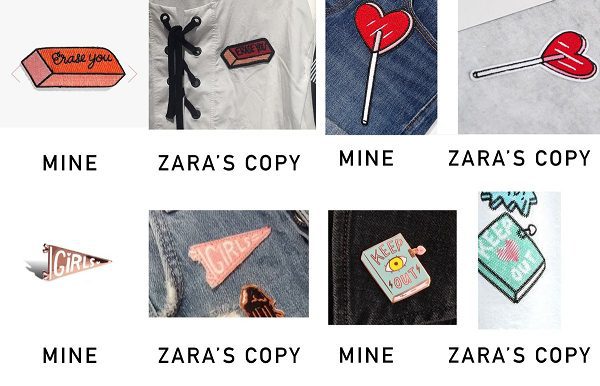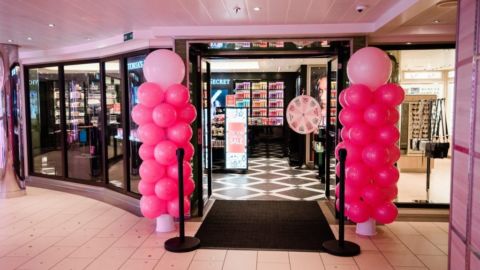 Fast fashion brands Forever 21 and Zara are being accused by independent artists of stealing their original designs and placing variations on their merchandise. This controversy highlights a growing reality within retail: Designers have to be proactive about protecting their intellectual property and retailers need to be more responsible about tapping these creators’ creativity.
Fast fashion brands Forever 21 and Zara are being accused by independent artists of stealing their original designs and placing variations on their merchandise. This controversy highlights a growing reality within retail: Designers have to be proactive about protecting their intellectual property and retailers need to be more responsible about tapping these creators’ creativity.
In a recent example of this intellectual property struggle, independent artist Tuesday Bassen shared a tweet including a comparison photo of her own designs and those released on Zara merchandise (shown above). As the tweet went viral, other artists made their own claims accusing the retailer of swiping their designs. To the untrained eye at least, many of the products appear to have been inspired by the original designs.
The ease of entry into the e-Commerce market has enabled more retail players and designers to create and sell products, which could increase the potential of similar designs being offered for sale. However, the increase in accessible designs creates more opportunities for brands to deliberately lift an idea and call it their own.
How Do Designers Protect Themselves?
Unfortunately, fashion designs aren’t protected by copyright law, therefore knockoff merchandise abounds. Independent artists have to flex their creative muscles when designing merchandise, and would be wise to gain an understanding of an intellectual property right known as “trade dress.”
Trade dress “refers to products with a design that is so recognizable that it becomes its own trademark,” said Ronda Majure, VP at Thomson CompuMark, a trademark research and brand protection solution provider. “The perfect example for this is the Hermes Birkin Bag. That trade dress is so connected with the Hermes brand that most people stay away from trying to do any type of copying that particular bag. While a trademark can protect the logo of a designer, the trade dress actually protects the physical appearance of a product.”
Majure highlighted another bag example, Hammitt bags, as one where the brand used unique hardware studs to ensure that its product could be proven genuine. So when it comes to creating designs for retail, designers and brands should think about ways to differentiate the end product to avoid blatant copying. .
“You’re starting to see designers use specific details in order to move their pieces into what would be an original, protectable state,” Majure said in an interview with Retail TouchPoints. “This can help them protect themselves when someone comes out with a bag that looks identical to theirs. They can say they’ve always designed this consistently.”
Designers should still file copyright registration, file patents on their products and even keep files of digital copies of their design progress, mainly because it shows their efforts secure product designs before other brands produce something similar.
Retailers Must Play Fair
Large fashion houses have hundreds of employees, so the slightest move that one in-house designer makes can reflect poorly on the brand. These retailers must run trademark and copyright searches to ensure they aren’t blatantly copying a design, even if the similarities shared with others are unintentional.
Although many of these big brands initially write a legal statement stating that plagiarizing other designers’ art is not their practice, they would earn more respect from artists if they took the effort to give credit for the inspiration, or even extended an offer for a partnership in the future. While the monetary value involved is up to the arbitrator in court, brands should at least acknowledge when an item design comes from elsewhere, or they risk long-term damage to their reputation within the creative community and their shopper base.













